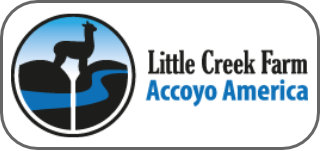Tag: "gene frequencies"
- Outbreeding (also called crossbreeding) is the opposite of inbreeding, in that unrelated animals are mated with the effect of increasing heterozygosity. Let’s step through an example by starting with two unrelated populations, 1 and 2. Population 1 has gene frequencies at the A locus of p1 = 0.8 and q1 = 0.2. Population 2 has gene frequencies at the A locus of p2 = 0.1 and q2 = 0.9. Right away we can tell the two are unrelated as the gene frequencies differ so much. Now cross them to create an F1 generation. (Back in Explaining Mendel’s Results Visually we defined an F1 generation as one resulting from the crossing of two purebred populations. Here we are using it more broadly to include two unrelated, but not necessarily purebred, populations.) more »
- Once animals have been selected for breeding, the next step is to decide which are mated to which via a mating system. Some examples of mating systems, each with different intentions, were briefly covered here. Last week we saw how selecting for a particular allelic expression (ie selecting for ‘best’ phenotype) can change the gene frequency significantly in a population. Genotypic frequencies change indirectly as a result — they ‘tag along’. Mating systems do however change genotypic frequencies directly, with gene frequencies less affected. These systems fall into two general categories: inbreeding systems and outbreeding systems. Inbreeding is a mating system which increases homozygosity. Outbreeding is a mating system which increases heterozygosity. more »
- Selecting animals for breeding is a process by which those deemed ‘best’ are allowed to be parents, and those deemed not, aren’t. The next generation is similarly assessed, and the next, and the next, with the population expected to improve incrementally each time. This gradual improvement over time is due to the frequency of desirable genes increasing in the population and the frequency of undesirable genes decreasing in the population. This results in a group of animals with increased breeding value, as they have a higher concentration of ‘best’ genes more likely to be passed onto the next generation. That next generation, with its higher concentration of ‘best’ genes will perform* at a higher level than earlier generations did. (* ‘Performance’ here is a breeding term that doesn’t necessarily refer to athletic performance such as speed. Rather, it refers to the resulting phenotype, as determined by the genotype. ‘Performance’ could be how fine a sheep’s wool is, for example.) Gene frequencies, breeding values and performance are all intertwined. Increasing breeding values and performance in a population increases the frequencies of desirable genes. Increasing the frequencies of desirable genes increases breeding values and performance. more »
- Describing the genotype of some simply-inherited traits in an individual animal can be straightforward — horned cattle are always ‘pp’, and looking at an Andalusian chicken will tell you if it is ‘BB’ (black), ‘Bb’ (slate-blue) or ‘bb’ (white). We know the exact alleles carried, and in which proportions. When it comes to describing the genotype of a population however, we refer to gene and genotypic frequencies instead. more »
